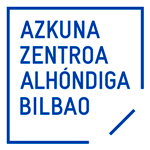
Carcaixent, 1978. She lives and works in Berlin. Visual artist and European summa cum laude PhD in Fine Arts at the Polytechnic University of Valencia.
he has an international academic education. She has worked as a researcher in Bauhaus Universität (Weimar), Universität der Künste (Berlín), Australian National University (Canberra) and Central Saint Martin School of Art (London). Her work has formed part of many collective and individual exhibitions, with special mention of the projects for Gemäldegalerie (Berlín), Sundowner-Neue Nationalgalerie (Berlín), Matadero (Madrid), Macro (Roma), Villa Croce (Génova), Vila Casas Foundation (Barcelona), CCCC (Valencia) and Patio Herreriano (Valladolid). She also forms part of collections of Bauhaus Universität-Weimar, DKV, IVAM, Olor Visual, Art Situacions, Generalitat Valenciana and Banco Sabadell.
Share:
I have lived as an accompanied hermit, who comes down to earth to gather and goes to heaven to think. I let myself go with the winds of observation, intuition, and imagination. After the reading of each book, behind every conversation, I began to conceptually settle my work. Collecting objects from outside, in the street markets, in the shops, visiting museums, ruins, cities, taking photographs of ephemeral events, I filled the studio 27. The tower with the fragmented windows of heaven. From above I lived in a time without time, feeling that Rome was Rome before being Rome. And she down there, calm in the distance, accompanied me in an almost mystical contemplation. Here I understood better what I do. I thought about the building of a sacred space, conscious of the manner in which I touch things, of the yearning to share the beauty of the world that I have. Sometimes I’ve felt that I wouldn’t be able to do anything at the level of what I was living, I even stopped trusting the objects, and I said to myself: “I don’t know what I’m going to do in this place, but I do know what this place is doing with me”. It’s that here I have lived torrential storms, complete rainbows, perfect clouds, and copper-coloured skies. I saw the moon enter in the equinox of spring, snow covering the Apeninos, the pyramid of Cayo Cestio silhouetted by dawn, the backs of Saint Mary in Trastevere and the Palatino as a mountain of earth. I was able to breathe in the gardens of Doria Pamphilj.
In this place my intuition became organised with an unexpected logic. I found my centre, my leaking point, my reason. I spoke about the absence of god in public and I proposed the recuperation of the cult of the sun. Now, more than ever, I feel art as an instrument capable of changing the day-to-day into something sacred, of offering a sacred space for the mind and body, a moment of existential consciousness.
The experience lived in the Academy meant recognition and possibility. It was a way to return home, to the Mediterranean. Here I recognized and admired the courage and sought-after quest of my colleagues, together with whom I have had the luck of learning, of thinking and of sharing knowledge and energy. They made everyday situations into moments of shared thought, generous with their exchange of ideas. I take with me recommended readings and new people who enrich my life.
It is incredible how a change of context can amplify our horizon and how being aware of impermanence may incite us towards the urgency of life. I now need an empty space in which to project all that I am taking with me. My eyes have become so used to the ruins, that when I don’t feel them close, I miss them. Rome remains within me.
“Numen”, designates not only the divinity of classic mythology, but also the idea of a magical power that lays within an object, as well as the inspiring power that moves the poet. The artist perceives, finds, and generates actions that seem to create dialogue with another world. They visualise ephemeral facts, transforming spaces and objects that speak of the presence and absences with which we live in the world. They reproduce events and generate sacred objects, that work in “lararium” mode, that ritual practice of the historic Roman home that conquered the construction of small sacred altars whose end was to pay homage to the ancestors, giving offerings to the domestic gods. It revolves around creating objects and site-specific installations based on the magic of the day-to-day facts that put the fundaments of the presymbolic state into practice.
